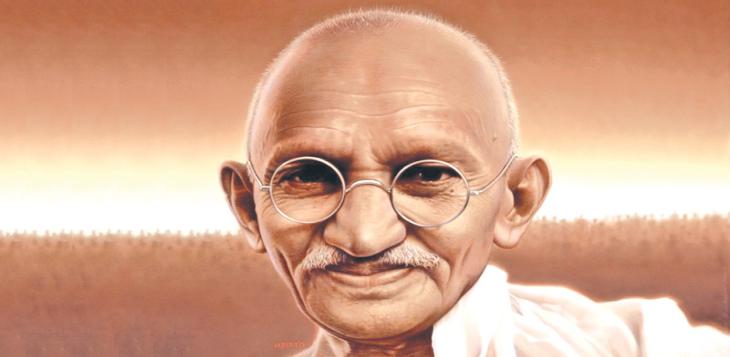Yesterday the world celebrated the International Day of Non-Violence. Known in India as Gandhi Jayanti, the date pays homage to an Indian lawyer, philosopher and pacifist. His name was Mohandas Karamchand Gandhi, who was born in October 2, 1869 in
Porbandar, a small coastal city on the West of India. 2019 marks his 150th birth anniversary.

During his youth Ghandi studied at the University College of London, England, where he rubbed shoulders with some of the most important philosophers and thinkers of his time. Ghandi returned to India some time after getting his bachelor’s degree to practice law.
Satyagraha
The word means resistance to tyranny through massive nonviolent civil disobedience. Ghandi’s doctrine was inspired by his years of work in South Africa, as well as by the “Bhagavad Gita”, Henry David Thoreau’s “Civil Disobedience” and by Leon Tolstoy’s “The Kingdom of God Is Within You.”
In 1930, Ghandi was the guiding force in one of the most well-known nonviolent protests for the freedom of his country: the Salt March. Gandhi and a group of his followers traveled 388 kilometers in 24 days in order to reach the Arabian Sea to get the mineral. This action was in open defiance to a British law that forbid the extraction or selling of salt in the colony. The very harsh way this protest was repressed attracted worldwide attention to the Indian independence movement.
Father of a Nation
About this diminutive man, Lord Willingdon, Viceroy of India, wrote in 1933: “It’s a beautiful world if it wasn’t for Gandhi, who is really a perfect nuisance.” And although Ghandi was the architect of the independence of India in 1947, he is remembered for other achievements. The most inspiring part of his work has to do with his almost three decades of perseverance and peaceful activism, founded on nonviolence and the strength of his convictions.
Another reason is that his goals were always much broader. They included the abolition of castes, social justice, the transformation of India’s primitive economic structures and furthering the convivence between religions. These goals converged on the ideal of a deep ethical and spiritual renewal of the human being. Gandhi’s role in India’s struggle for independence would serve as inspiration for leaders such as Martin Luther King’s and Nelson Mandela.
Dark Side of a Hero
Gandhi is far from being a simple historical figure or a frail old man with a beatific smile. Famous for advocating civil disobedience and non-violence to achieve his goals, he has been the target of very strong criticism. For instance, even though in a series of letters from 1939 and 1940, Gandhi tried to convince German dictator Adolf Hitler not to start a war in Europe, some historians have criticized his extreme non-violent approach to World War ll. In May 1940 Ghandi wrote: ‘I do not believe Herr Hitler to be as bad as he is portrayed”. In another controversial letter he stated that “the Jews would win God’s love by voluntarily going to their deaths”.

Furthermore, according to diverse accounts Mahatma Gandhi was racist and classist in his youth. As an old man he was accused of sleeping with naked girls. How these accusations stack up against Ghandi’s legacy is a matter of debate. Even the most beloved historical figures are only human.
Mahatma Gandhi was assasinated on January 30, 1948 in Birla Bhavan, New Delhi. His murderer, Nathuram Godse, was a Hindu radical associated with some ultra-rightist groups. They accused him of fraternizing with the Muslims and of acquiescing with the ‘dismemberment’ of India that finally gave birth to Pakistan
“There are many causes I am prepared to die for, but there is no cause for which I am prepared to kill for”

